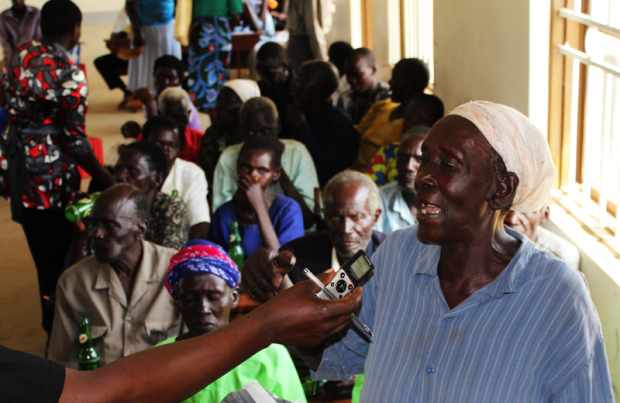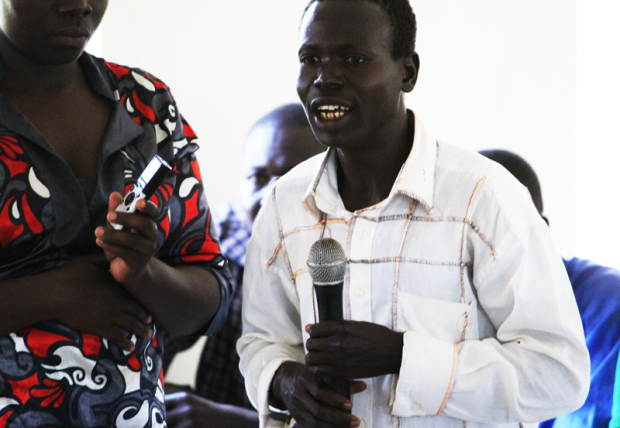
The Justice and Reconciliation Project’s Regional Reconciliation initiative is a one year program designed to foster social cohesion and reconciliation in northern Uganda following the growing tension among communities in the north. Northern Uganda went through a number of conflicts and the most recent was that of LRA war that left a land mark effect on the population: the violent nature of the war caused tension among ethnic groups in northern Uganda as some ethnic groups are accusing other ethnic groups for their suffering during the war. To improve on the fragmented social fabric of life in northern Uganda, JRP’s project seeks to reconcile the people of Acholi and Lango sub regions by combining the effort of every stakeholder in peace building processes.
With funding support from USAID’s Supporting Access to Justice, Fostering Equity and Peace program, JRP worked in four districts in northern Uganda (Amuru, Gulu, Lira and Aleptong) to foster social cohesion and reconciliation among the Acholi and the people of Lango sub-regions. In enrolling the project in the four districts, we introduced our organization and the project to districts, sub-counties, cultural institutions and civil society offices to help them understand the initiative and to seek their collaboration in fostering reconciliation within communities and between the people of Acholi and Lango. With great enthusiasm, local government officials in the districts and sub counties, CSOs, cultural and religious leaders, peace committees and victims and survivors of war all embraced the program and joined together to support regional reconciliation initiative.
“This is one area that no one has taken seriously during this post conflict reconciliation era,” said the LC III Chairperson of Agweng sub-county in Lira, “The war left societies torn apart and people are living in fear of each other including people in my area. I’m so much in support of this reconciliation project and I will give full support to the program.”

In order to make total peace possible in this post conflict period, forgiveness and reconciliation are two things that needs to be emphasized. Having been hurt and violated immensely during the conflict, many individuals, communities and groups still point fingers and blame one another for making them suffer as individuals, community or as an ethnic group.
Since the introduction of regional reconciliation project in Lango and Acholi sub regions, there has been overwhelming positive responses and support from local government leaders, cultural and religious leaders and the community members to contribute to addressing the legacy of war in northern Uganda to avoid re-occurrence of further conflict. In Atiak sub-county, Amuru district, the sub-county Community Development Officer (CDO) expressed with deep sorrow the bitter relationship that exist between the Acholi people of Atiak sub county and the neighbouring Madi of west Nile that escalated due the LRA war. This has affected trade and intermarriages between the two communities. To him the reconciliation process is desperately needed in northern Uganda. While in Abia sub-county, Alebtong District, victims and survivors of war bitterly expressed their anger for bearing the consequence of the war and for not being repaired for the atrocities committed to them. However, they showed the heart to forgive and reconcile and to cooperate with other stakeholders in the social reconstruction process.
The willingness and active participation of various stakeholders in this project is a big boost to the project success and in enhancing sustainability of reconciliation process in northern Uganda. For example, CDOs, Sub- County Chiefs and LC III’s are far playing lead roles in mobilizing for reconciliation processes in each district while traditional and religious leaders are providing technical support to achieve reconciliation within communities and at regional level. Mobilization efforts and technical skills being provided by CSOs in facilitating capacity building workshops on reconciliation themes is also acknowledged in contributing to the success of regional reconciliation.
It is our hope that when this collaboration is enhanced, regional reconciliation will definitely be achieved on a silver plate.
Grace Acan is a Project Assistant with the Justice and Reconciliation Project’s Community Mobilisation department.
